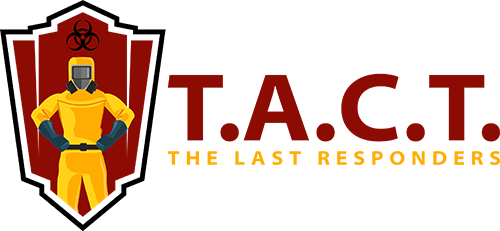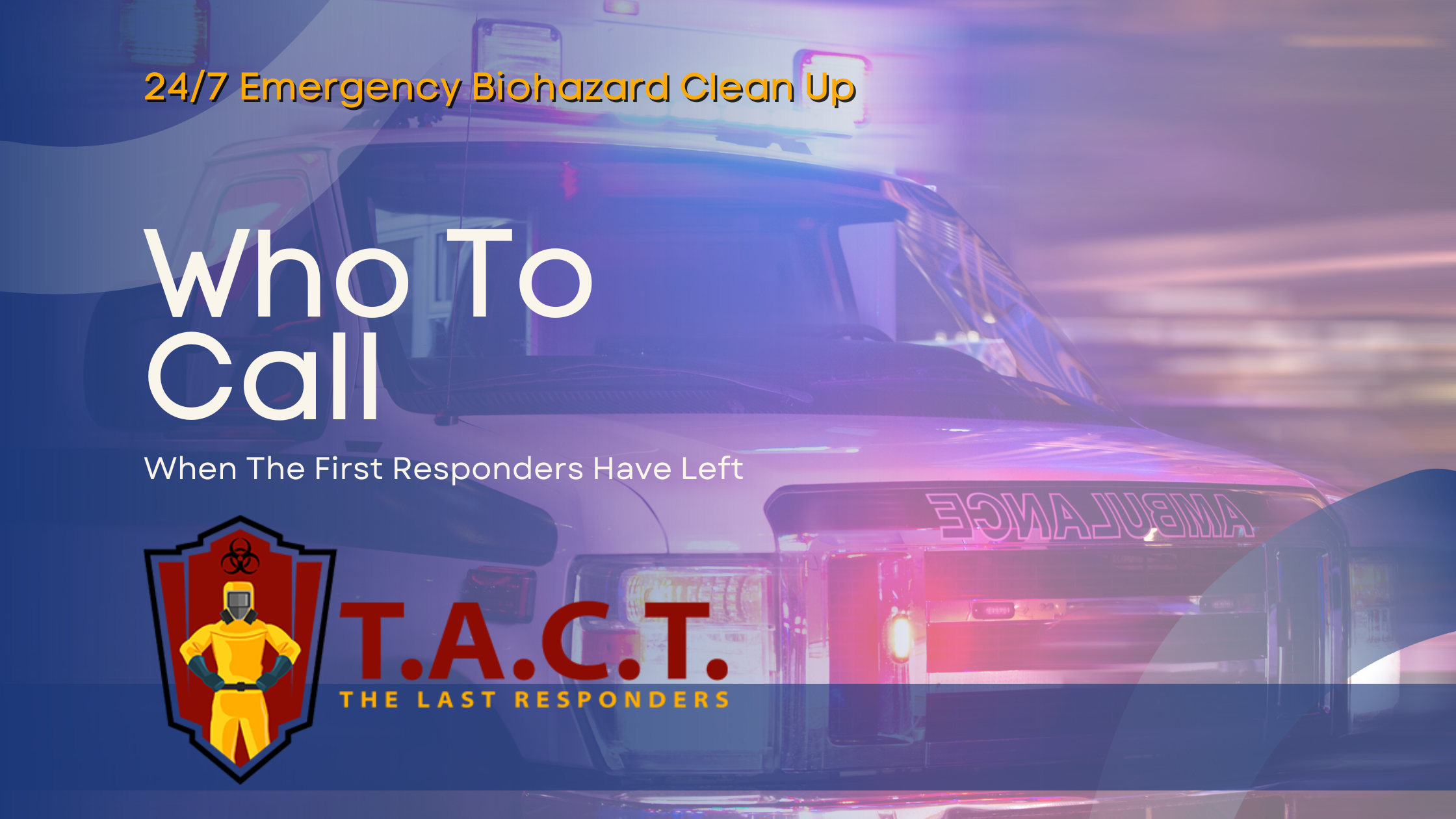Hazmat clean up
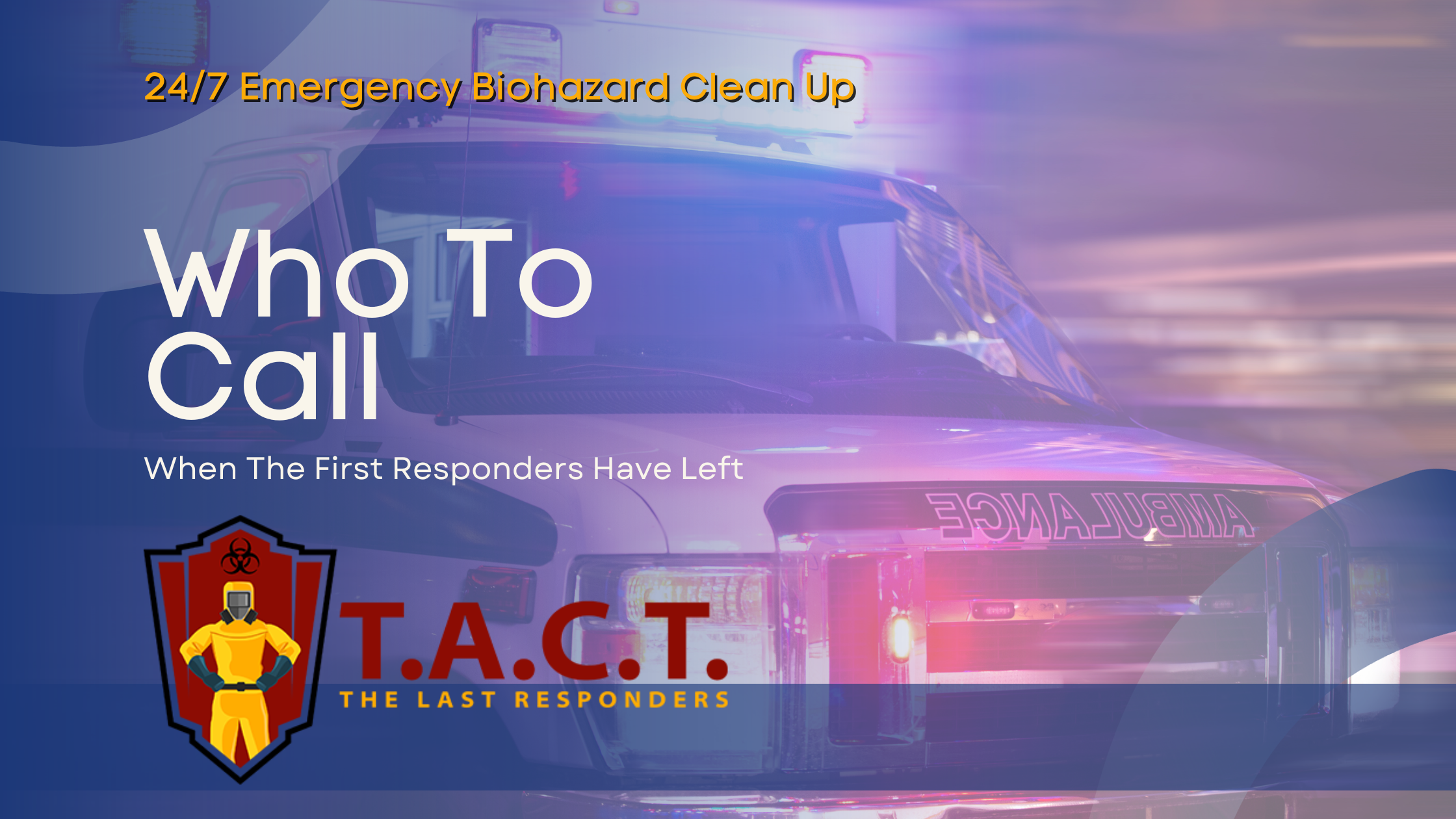
The Best Practices for Effective Hazmat Clean Up
Hazmat clean up involves removing hazardous materials that pose health and environmental risks. This guide explains the process, health hazards involved, and the need for professional help in hazmat clean up situations.
Key Takeaways
Understanding hazardous materials, including their types and associated health risks, is crucial for effective hazmat cleanup.
Immediate and appropriate actions during a hazmat incident, including evacuation and the use of personal protective equipment (PPE), are essential to ensure safety and mitigate risks.
Choosing a professional hazmat cleanup service involves evaluating their certifications, experience, and compliance with safety regulations to ensure effective and safe management of hazardous materials.
Understanding Hazmat Clean Up
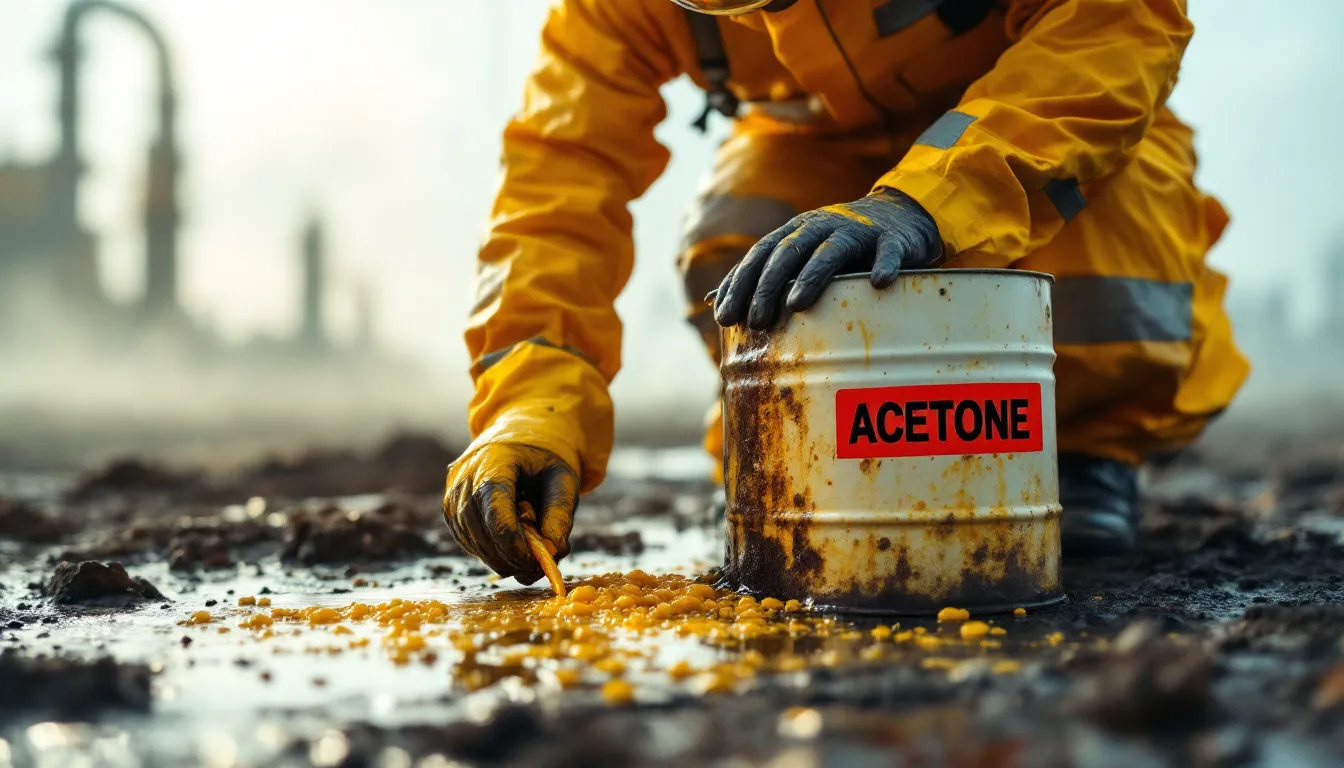
Hazmat, short for hazardous material, refers to substances that pose a danger to life or the environment. These hazardous substances can come from various sources, including manufacturing processes, discarded materials, and unused products. Hazardous waste can take various forms, including liquid, solid, or gas, and consists of substances with harmful or dangerous characteristics. Proper hazardous waste removal and disposal are crucial for immediate safety for workers and long-term community well-being.
Recognizing various hazardous materials, associated health risks, and the need for proper handling hazardous materials training is key to understanding hazmat cleanup. These aspects are crucial for managing hazmat incidents effectively and safely.
Types of Hazardous Materials
Hazardous materials can be broadly categorized into three main types:
Chemical hazards: These include toxic substances such as industrial chemicals and solvents that can cause serious health risks and environmental damage.
Biological hazards: This category encompasses biohazardous materials like infectious diseases, blood spills, and other hazardous materials that pose significant health risks.
Radiological hazards: These involve radioactive substances that require specialized handling and disposal techniques to prevent contamination.
The presence of these hazardous materials can complicate cleanup processes, requiring specialized techniques and protocols to manage risks effectively. For instance, handling chemical spills may involve using neutralizing agents, while biohazard cleanup might require specific disinfectants and protective gear. Understanding these differences is crucial for effective hazmat cleanup.
Health Risks Associated with Hazmat Clean Up
Hazardous materials can pose serious health risks, including exposure to blood-borne pathogens and respiratory illnesses. Certain chemical agents can lead to detrimental effects on humans, animals, or plant life. Improper handling of blood spills can result in exposure to infectious diseases and significant health risks. Proper hazardous waste removal, including biohazardous waste, prevents ongoing health hazards and environmental disruption.
Training is crucial in hazmat cleanup for the safe management of hazardous spills. Lack of appropriate training can expose individuals to serious health risks, including toxic fumes, skin irritations, and long-term illnesses. This is why only trained and certified professionals should handle hazmat cleanup situations.
Importance of Proper Training
Trained professionals are essential for hazmat cleanup as they understand how to safely manage spills and hazardous materials. Certification and training ensure safety and regulatory compliance for hazmat technicians.
Selecting a hazmat cleanup service requires examining their regulatory compliance and safety standards. Ensure the hazmat cleanup company you select is properly registered and licensed to handle hazardous materials. Hazmat Schools provide courses on recognizing hazards and cleaning hazardous spills.
Immediate Actions During a Hazmat Incident
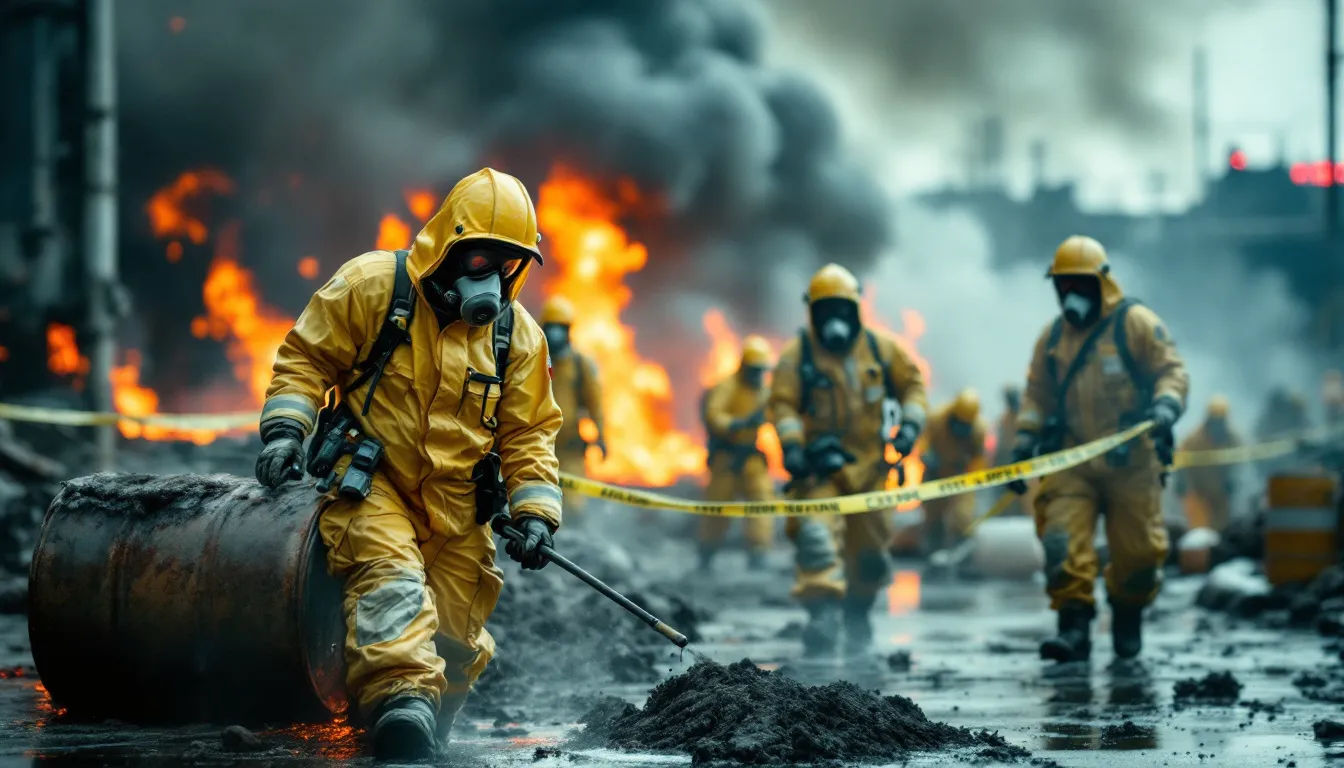
During a hazmat incident, taking immediate and appropriate actions is crucial to mitigate risks. Specific guidelines help mitigate risks immediately after a HAZMAT spill. Do not attempt to clean up a hazardous spill if it is a major spill, if the substance is unknown, or if there is a lack of experience. When dangerous materials are present, call for immediate assistance. In case of a major spill, evacuate the area and contact emergency services immediately.
Immediate action involves alerting and evacuating individuals, assessing the spill’s severity, and using personal protective equipment (PPE) to prevent contamination. These steps are critical to ensuring the safety of everyone involved and preventing further contamination.
Alert and Evacuate
One of the first steps in responding to a hazardous spill is to notify individuals in the vicinity and evacuate the area to safeguard their health. Notification and evacuation protocols prevent exposure to hazardous materials.
Hazmat cleanup companies should have rapid response capabilities to address incidents quickly. Evacuating affected areas quickly can prevent accidents and minimize health risks.
Assess the Situation
Before: The first step in responding to a hazardous spill is to determine if it’s a minor or major spill. Identifying the type, quantity, and risks of the hazardous material is essential for an effective response. For life-threatening hazardous materials or large volumes, call 911 immediately. Additionally, make sure to inform the nearby supervisors.
After:
Determine if the spill is minor or major.
Identify the type, quantity, and risks of the hazardous material.
For life-threatening hazardous materials or large volumes, call 911 immediately.
Inform the nearby supervisors.
If unsure about the hazardous substance, call your supervisor and 911 if needed. Non-medical emergency responders can gather information from witnesses regarding potential victims at a safe distance.
Utilize Personal Protective Equipment (PPE)
Anyone involved in hazmat cleanup must use Personal Protective Equipment (PPE). Using PPE during hazmat cleanup protects against contamination. Personal protective equipment is vital for safeguarding against contamination during hazmat cleanup.
Proper training ensures correct and effective use of proper personal protective equipment.
Containment and Mitigation Strategies
Containment and mitigation strategies are crucial in managing hazardous spills. Stopping the spill source is essential to control the spread of hazardous materials. Various tools and techniques, such as absorbents, barriers, and neutralizing agents, achieve containment. Environmental protection measures, including proper disposal of hazardous waste, are vital to prevent contamination during cleanup.
These strategies involve multiple steps, including stopping the spill source, employing containment tools and techniques, and implementing environmental protection measures to minimize contamination.
Stopping the Source
Identifying a spill’s origin is crucial for immediate control measures. Trained professionals stay current with safety protocols and regulatory requirements. Identifying the primary source of a spill is key to controlling its spread effectively.
This step is essential to prevent further leakage and control contamination.
Containment Tools and Techniques
Absorbents manage spills by soaking up hazardous substances. Absorbent materials in spill kits are crucial for managing hazardous spills. Tools from a spill kit are used to dam and divert hazardous material.
Effective decontamination uses tools like absorbents and neutralizing agents to treat spills that are effectively removed.
Environmental Protection Measures
Health risks from hazardous waste include respiratory illnesses, skin irritations, and potential contamination of soil and water, which can adversely affect human health. Eco-friendly decontamination methods like bio-remediation are emerging as sustainable alternatives to traditional cleaning agents, reducing the risk associated with hazardous materials and contaminants.
Protecting the environment from contamination during hazmat cleanup preserves ecological balance and public health, as emphasized by the environmental protection agency.
The Hazmat Clean Up Process
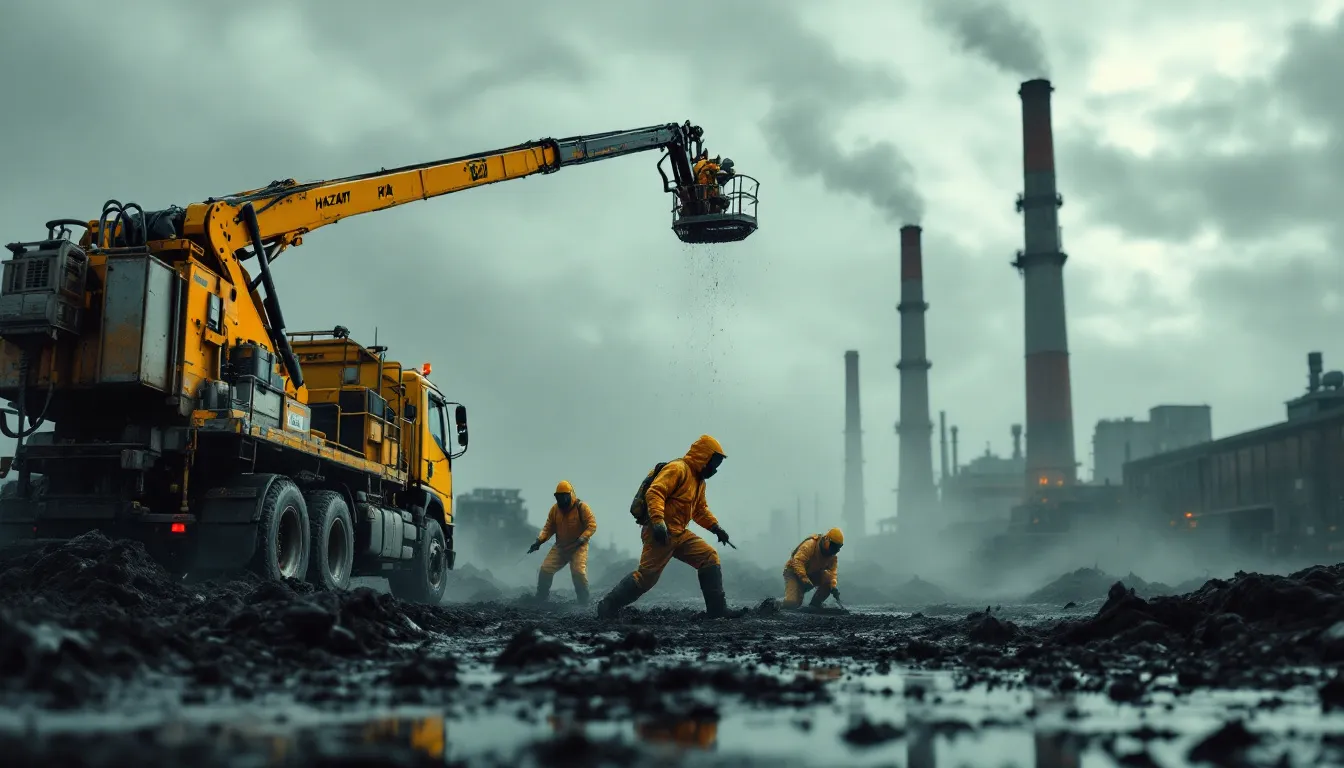
The hazmat cleanup process involves several critical steps to ensure safe and effective removal of hazardous materials. Initial actions during a hazmat incident include rescuing individuals, confining the spill, reporting it, securing the area, and cleaning up, ensuring only trained personnel are involved. The cleanup plan follows EPA, CDC, and OSHA guidelines with a focus on safety. Proper hazmat cleanup addresses the health risks and environmental impacts of hazardous spills.
The process involves decontamination, proper disposal of hazardous waste, and accurate documentation and reporting for regulatory compliance and future prevention.
Decontamination Procedures
Inadequate handling of biohazards and biohazardous materials can lead to severe health risks and ineffective decontamination. Real-time monitoring technologies ensure rapid detection and response to hazardous substances during cleanup.
A blood spill scene must be decontaminated, disinfected, and cleaned. After cleaning, place contaminated objects in secondary containment.
Disposal of Hazardous Waste
Proper disposal of hazardous materials is critical to prevent environmental contamination. Proper disposal methods significantly reduce environmental contamination risks during cleanup.
Following local and federal regulations is essential for proper hazardous waste disposal.
Documentation and Reporting
Accurate documentation during cleanup ensures regulatory compliance and aids future prevention efforts. We work closely to ensure that any minor spills or accident should be reported to supervisors.
Photographs and documentation of the damage are taken as part of the cleanup process.
Professional Hazmat Cleanup Services
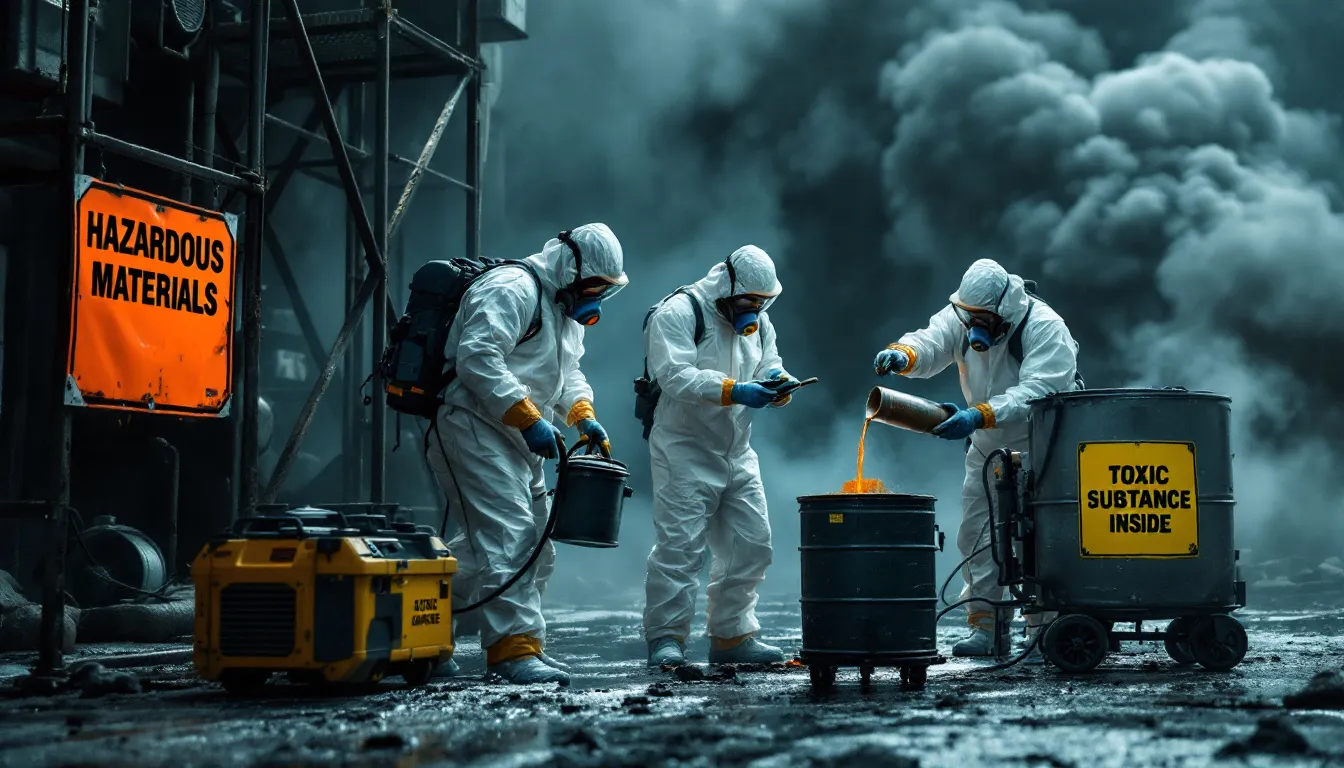
Professional hazmat cleanup services ensure thorough cleaning and safe handling of biohazardous materials. Professionals restore affected properties to a safe, habitable condition. Hazmat cleaning services employ skilled professionals for safe and effective cleanup. These services comply with OSHA and public health regulations.
Hazmat services operate in dangerous conditions, ensuring all safety protocols are followed to minimize risks to the public and environment.
Expertise and Experience
Professional intervention in hazmat cleanup ensures safety, regulatory compliance, and peace of mind. Hazmat teams for cleanup follow CDC protocols and OSHA regulations to maintain safety standards.
Evaluating a company’s track record, including response times and success rates, is crucial in the selection process.
Advanced Equipment and Technology
These companies use specialized equipment to enhance safety and efficiency in hazardous situations. Sophisticated equipment enables quicker containment and decontamination, reducing overall cleanup time.
Advanced technology minimizes exposure risks for cleanup professionals.
Comprehensive Service Offerings
Services regarding biohazard situations include biohazard cleanup, removal of blood and bodily fluids, and disinfection in a biohazard situation. Professional hazmat cleaning services offer tailored solutions to diverse industries, including healthcare and food services, as well as biohazard cleanup services.
Certified hazmat cleanup services minimize downtime and reduce insurance claims through custom emergency protocols.
Cost Considerations for Hazmat Cleanup
On average, hazmat cleanup costs can range from $1,000 to $5,000, influenced by factors like contamination level and location. Bio Recovery aims to simplify the hazmat cleanup process. Their goal is to make it straightforward and stress-free. Bio Recovery is committed to transparency in pricing.
Understanding hazmat cleanup costs involves recognizing factors that influence expenses and the role of insurance in covering them.
Factors Affecting Cleanup Costs
Checking local guidelines for proper disposal of spill-cleaning materials significantly influences cleanup costs for self pay clients. Without insurance, a fixed daily price agreed upon upfront is typically charged, impacting overall cost.
Insurance Coverage
Insurance can expedite the process, with the insurance company working with carriers to minimize costs. Insurance is crucial for covering costs associated with hazmat cleanup.
Choosing the Right Hazmat Cleanup Company

Evaluating certifications, experience, and customer testimonials is key to choosing the right hazmat cleanup company. Reviewing a company’s successful cleanup history builds confidence in their ability to manage hazardous incidents. Clients often express concerns about the expenses associated with hazmat cleanup.
Properly vetting companies and understanding the latest hazmat cleanup innovations are crucial for making an informed knowledge decision.
Vetting Potential Companies
Reputable hazmat cleanup companies should have relevant certifications and experience with various hazardous materials. References and reviews from previous clients indicate a hazmat cleanup company’s reliability and professionalism.
Customer testimonials offer insight into the reliability and quality of a hazmat cleanup company’s services.
Innovations in Hazmat Cleanup
Advancements in technology for safety and efficiency are central to effective hazmat cleanup. Emerging technologies in hazmat cleanup enhance safety and improve operational efficiency.
Advanced robotics in hazmat cleanup enable safer operations in hazardous environments.
Summary
In summary, understanding and implementing best practices for effective hazmat cleanup are crucial for ensuring safety and minimizing environmental impact. From recognizing the types of hazardous materials to taking immediate actions during an incident, and from employing containment strategies to engaging professional services, each step plays a vital role in managing hazmat situations. By following these guidelines, we can protect human health and the environment, ensuring a safer future for all.
Frequently Asked Questions
What are the types of hazardous materials?
Hazardous materials are classified into three main types: chemical hazards, biological hazards, and radiological hazards, encompassing industrial chemicals, biohazardous materials, and radioactive substances. It is essential to recognize these categories to ensure safety and compliance with regulations.
What are the health risks associated with hazmat cleanup?
The health risks associated with hazmat cleanup include exposure to blood-borne pathogens, respiratory illnesses, and the potential for long-term diseases from improper handling of hazardous materials. Proper safety measures must be taken to mitigate these risks.
Why is proper training important in hazmat cleanup?
Proper training is crucial in hazmat cleanup as it equips individuals with the necessary skills to safely handle hazardous materials, adhere to regulations, and reduce health risks. This ultimately protects both the workers and the surrounding environment.
What immediate actions should be taken during a hazmat incident?
During a hazmat incident, it is crucial to alert and evacuate individuals immediately, assess the situation, and utilize personal protective equipment (PPE) to prevent contamination. Prompt and decisive action is essential for safety.
How do professional hazmat cleanup services help?
Professional hazmat cleanup services provide thorough cleaning and safe handling of hazardous materials, ensuring regulatory compliance and restoring affected properties to a safe condition. This is essential for protecting health and safety.
Latest news
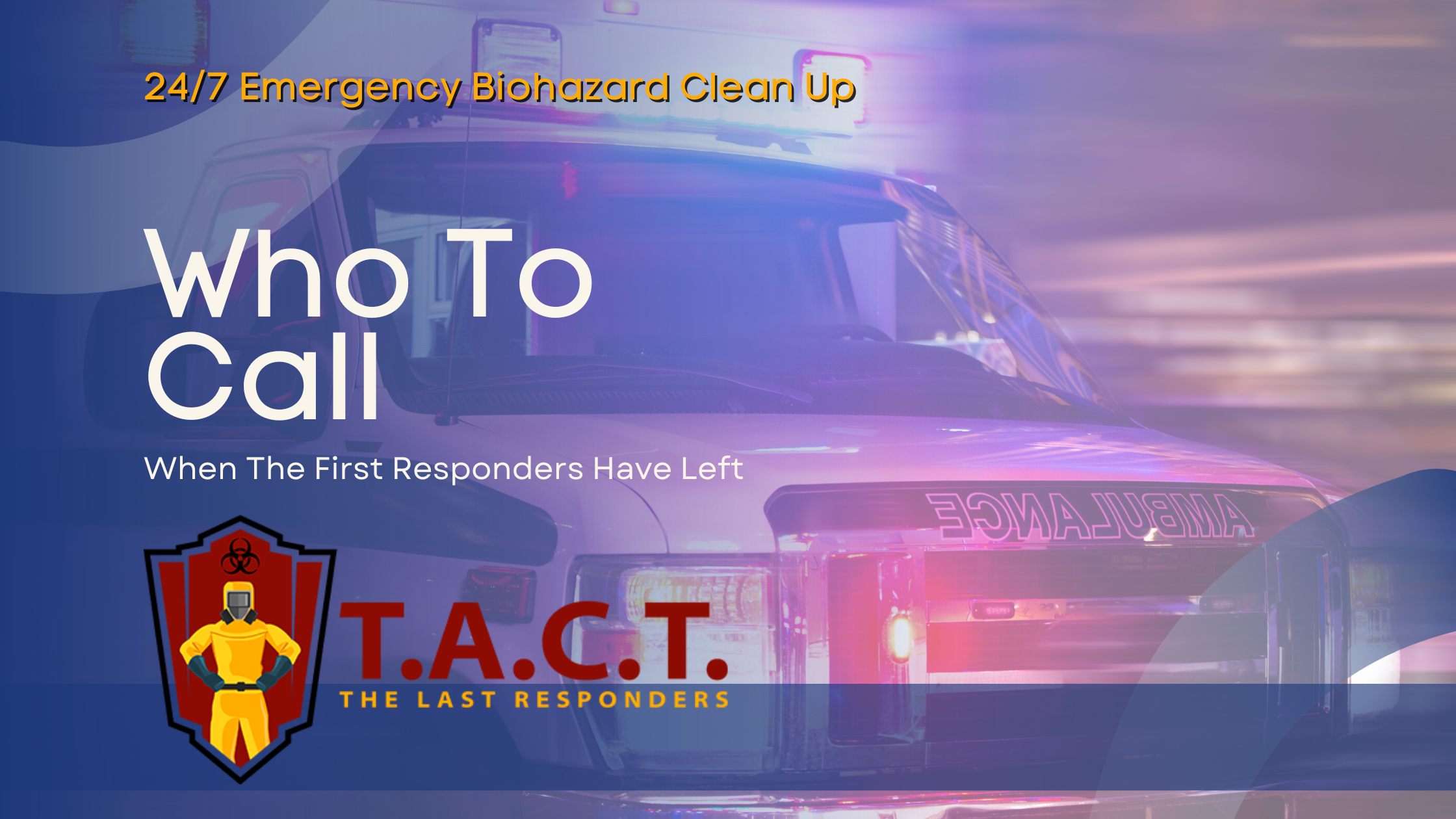
Bio Cleaning Services
Read More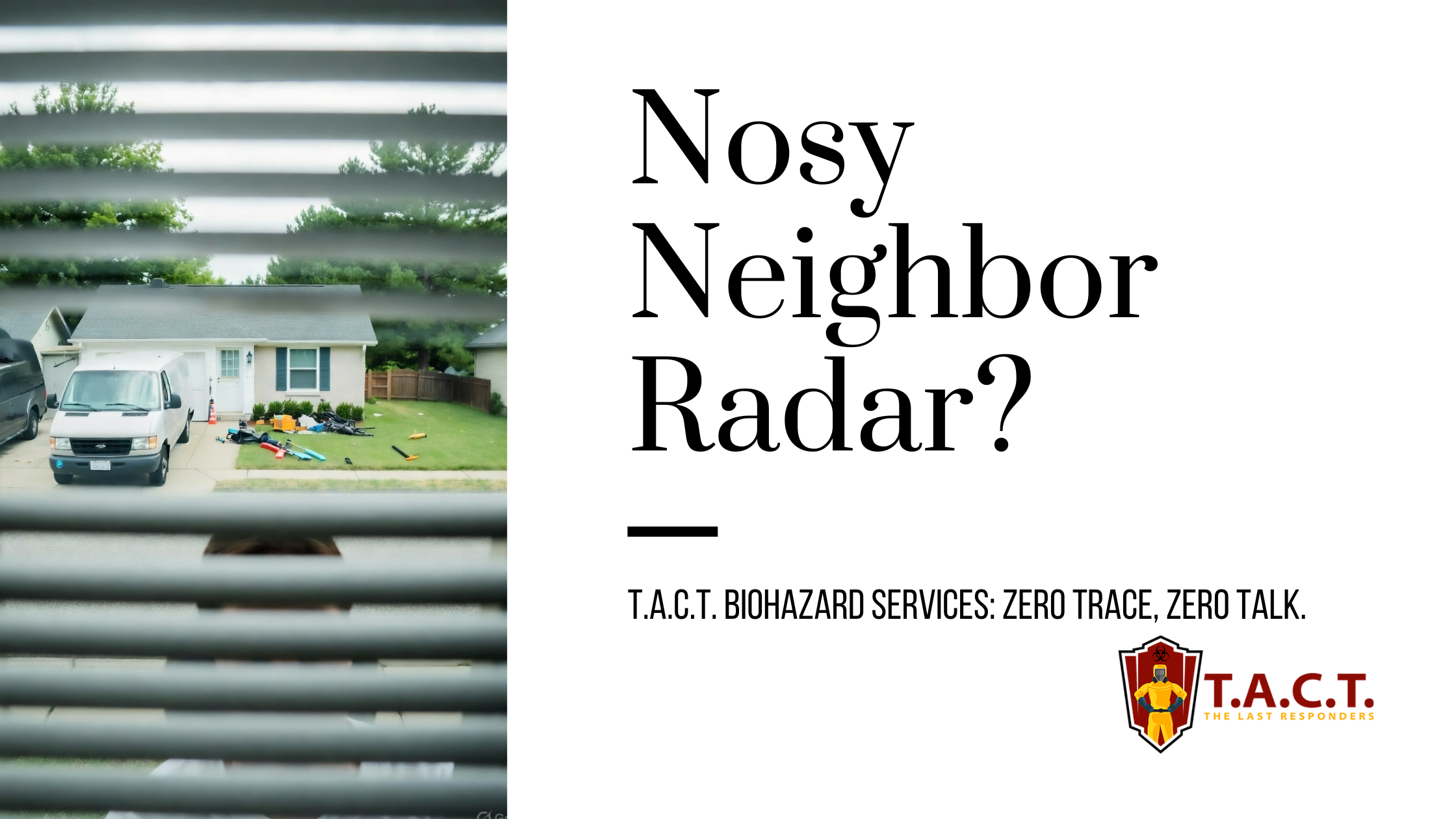
Nosy neighbors peeking? T.A.C.T. North Atlanta offers discreet biohazard remediation for rodent infestations, mold, hoarding, and more. Unmarked vehicles, quiet experts, full privacy—24/7 service at 470-781-4775.
Read More